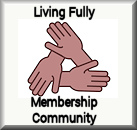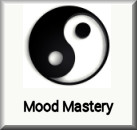This is a Review of the Excellent Book by John and Julie Gottman and Doug and Rachel Abrams, called, “Eight Dates, Essential Conversations for a Lifetime of Love”. The book aims to help many types of couples, those married recently, for a long time, those considering a partnership and those who are living together. The authors crafted exact templates for talking about what research has found to be the 8 essential topics for a joyful and fulfilling relationship that stands the test of time. Like most relationship experts, including me, we advocate regular date nights. This book looks at how you can have meaningful conversations on date nights that are aimed at drawing you closer together.
 I hear lots of complaints in my private practice regarding the feeling of couples slipping into the roommate mode where conversations are just about bills and kids. This book really helps you to go deeper and have more satisfying conversations which help you to keep your relationship fresh and emotionally intimate. The Date topics covered are; Trust and Commitment, Addressing Conflict, Sex and Intimacy, Work and Money, Family, Fun and Adventure, Growth and Spirituality, and Dreams.
I hear lots of complaints in my private practice regarding the feeling of couples slipping into the roommate mode where conversations are just about bills and kids. This book really helps you to go deeper and have more satisfying conversations which help you to keep your relationship fresh and emotionally intimate. The Date topics covered are; Trust and Commitment, Addressing Conflict, Sex and Intimacy, Work and Money, Family, Fun and Adventure, Growth and Spirituality, and Dreams.
The book begins with giving you some guidance on skills for making a success at this dating adventure, including words for deep conversations with your mate and how to listen well. Each subject gives you some information on why this subject is important and gives you a small teaching. There may also be surveys that you answer that help you to decide where you are now. Then at the end of each topic section, the book gives you a blueprint of the “how” you can have a great conversation on the topic. How great is that!
The book facilitates your creativity in both dates away from home with great suggestions for inexpensive or free dates as well as those that are not. It also helps you to have successful date nights at home. I like the way the book is laid out in that it gives you a summary at the end of each topic which can continue to stimulate your thinking. I recommend this lovely skinny little book wholeheartedly!
Go forth and Be Wonderful!

 Your relationships with your partner and your family is one of the greatest blessings that you have. Take this day to remember past good memories together – they often get lost in the challenges of life. Bring them to mind and be thankful for them. Look at the characteristics that your partner has that you appreciate. There are many. Look at their values, their good intentions, their care for you and your family. Be grateful that they are willing to share their life with you. Express your gratitude out loud. Notice that the child in this picture looks filled with joy in every part of him at his experience of a found pumpkin – we can learn from him. I hope you are able to find gratitude today amidst the wonderful traditions you may have (my turkey is beginning to smell great as I write this) as well as the challenges in your family that may bring sadness in your life. Our lives are not necessarily all easily felt blessings but sometimes take some work to find the blessings within the challenge. Sometimes families and health issues are a part of our lives that stretch us to find the places of gratitude but it is worth the effort to do so! My challenge to you today is to keep the gratitude expressions going for the next 2 weeks and see the difference that it makes for you and your relationship. Go forth and live fully!
Your relationships with your partner and your family is one of the greatest blessings that you have. Take this day to remember past good memories together – they often get lost in the challenges of life. Bring them to mind and be thankful for them. Look at the characteristics that your partner has that you appreciate. There are many. Look at their values, their good intentions, their care for you and your family. Be grateful that they are willing to share their life with you. Express your gratitude out loud. Notice that the child in this picture looks filled with joy in every part of him at his experience of a found pumpkin – we can learn from him. I hope you are able to find gratitude today amidst the wonderful traditions you may have (my turkey is beginning to smell great as I write this) as well as the challenges in your family that may bring sadness in your life. Our lives are not necessarily all easily felt blessings but sometimes take some work to find the blessings within the challenge. Sometimes families and health issues are a part of our lives that stretch us to find the places of gratitude but it is worth the effort to do so! My challenge to you today is to keep the gratitude expressions going for the next 2 weeks and see the difference that it makes for you and your relationship. Go forth and live fully! The foundations include all that would come under friendship. Do you take the date night in your relationship seriously? Do you know your partner’s struggles and wishes for life? Do you know and empathize with their daily work life either away or at home? Do you know what they worry about especially at night? What hurts them in the world? Do you provide a place of safety for them? Are they able to talk to you and be understood – not fixed. Do you touch them often to reassure them – you are there for them? It is in these circumstances that we are able to make better repairs. The reason for this is that the conflict does not have the same importance as the relationship does. It becomes “just an issue”, not a threat to the relationship. Remembering that sometimes issues get resolved right away and sometimes they evolve and change over time or we change and the issue changes. Think on this in your relationship today. Go forth and Be Wonderful!
The foundations include all that would come under friendship. Do you take the date night in your relationship seriously? Do you know your partner’s struggles and wishes for life? Do you know and empathize with their daily work life either away or at home? Do you know what they worry about especially at night? What hurts them in the world? Do you provide a place of safety for them? Are they able to talk to you and be understood – not fixed. Do you touch them often to reassure them – you are there for them? It is in these circumstances that we are able to make better repairs. The reason for this is that the conflict does not have the same importance as the relationship does. It becomes “just an issue”, not a threat to the relationship. Remembering that sometimes issues get resolved right away and sometimes they evolve and change over time or we change and the issue changes. Think on this in your relationship today. Go forth and Be Wonderful! Once you have some practice, you will find it easier to understand yourself in this regard. At first you may not do this well each time. If you don’t do this well in the moment and regret your secondary emotional response, make sure your repair with your partner includes sharing what was really going on. If you are the hearer of these emotions, you will likely relate to these deep emotions. Your response is important. Make sure you honour the gift of your partners sharing by creating emotional safety and treat the gift with a gentle and reassuring response. This creates continuing attachment security in your relationship which is what we all long for.
Once you have some practice, you will find it easier to understand yourself in this regard. At first you may not do this well each time. If you don’t do this well in the moment and regret your secondary emotional response, make sure your repair with your partner includes sharing what was really going on. If you are the hearer of these emotions, you will likely relate to these deep emotions. Your response is important. Make sure you honour the gift of your partners sharing by creating emotional safety and treat the gift with a gentle and reassuring response. This creates continuing attachment security in your relationship which is what we all long for.
 Being in the middle of a criticism contempt loop is so hard on couples. Gottman’s research shows that it is a direct cause of the break up of a relationship. The party who is the “criticizer” feels so justified and will often ask friends to affirm their thoughts and feelings. They have amassed a story that makes the other person unworthy to be alive and they may make a psychological diagnosis for their partner (my favorite). Their partner in return becomes defensive and then depending on their attachment style, avoids their partner, leaves the situation or moves in to the relationship intensely to ‘prove’ they are not that person. And the loop goes on.
Being in the middle of a criticism contempt loop is so hard on couples. Gottman’s research shows that it is a direct cause of the break up of a relationship. The party who is the “criticizer” feels so justified and will often ask friends to affirm their thoughts and feelings. They have amassed a story that makes the other person unworthy to be alive and they may make a psychological diagnosis for their partner (my favorite). Their partner in return becomes defensive and then depending on their attachment style, avoids their partner, leaves the situation or moves in to the relationship intensely to ‘prove’ they are not that person. And the loop goes on.




